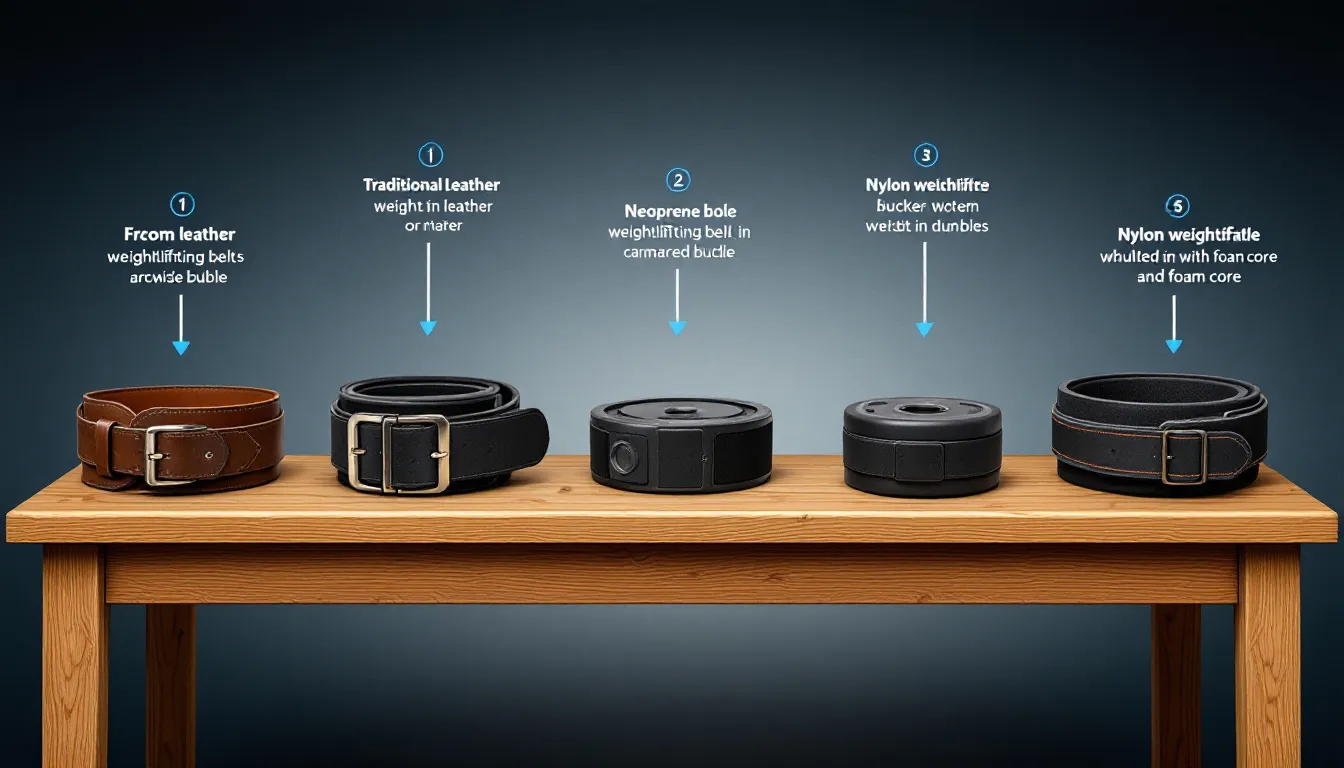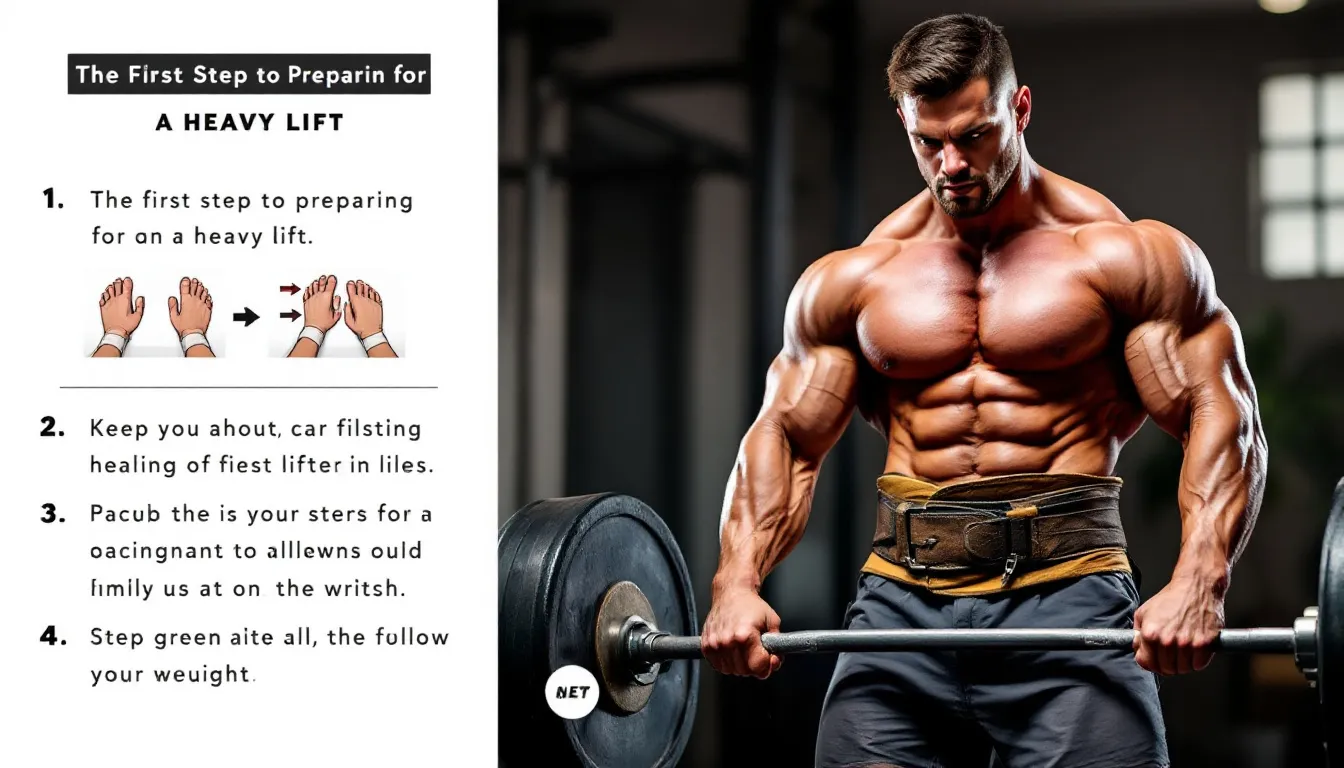
How to Pick a Lifting Belt: A Practical Guide for Every Lifter
Share
Weightlifting belts have been tested by some of the strongest athletes, elite competitors, and even Olympians, validating their effectiveness.
While these belts can aid in safety, it’s important to note that they may not significantly reduce the overall risk of injury, as many believe. Instead, they are tools that can enhance performance and support lifters during heavy lifts, such as an Olympic weightlifting belt.
This guide will provide insights on choosing the right lifting belt tailored to your individual lifting needs. From understanding the benefits to selecting the best type for your goals, this comprehensive guide is designed to help you make an informed decision and enhance your lifting experience.
How to Pick a Lifting Belt: A Practical Guide for Every Lifter

Using a lifting belt can be a game-changer for anyone serious about lifting weights. These belts are designed to enhance your strength and lifting form during exercises like squats and deadlifts. They support your core muscles, reminding you to engage them, which can significantly improve your lifting biomechanics. Contrary to popular belief, weightlifting belts do not weaken your core; they help you engage it more effectively.
These belts are indispensable tools for advanced lifters, boosting confidence when attempting maximal lifts. Whether aiming to break personal records or simply want to lift safely, understanding how to pick the right lifting belt is crucial. This guide will walk you through everything you need to know to make an informed choice.
Understanding the Benefits of Weightlifting Belts

Weightlifting and weight belts offer numerous benefits that can transform your lifting sessions.
They enhance performance by improving biomechanics, support core muscles during heavy lifts, and provide safety benefits by supporting proper form and reducing strain on the lower back.
Let’s delve deeper into these benefits to understand why a lifting belt is valuable to your lifting gear.
Enhanced Core Stability
One of the primary benefits of wearing a weightlifting belt is its enhanced core stability. The belt creates intra-abdominal pressure by maintaining tension within the abdomen, which is crucial for stability during demanding exercises. This increased pressure supports the core muscles, allowing them to contract more effectively against external forces.
Moreover, the belt’s support for intra-abdominal pressure contributes to enhanced lower back and core stability. Knowing your core is fully engaged and supported, you can lift heavier weights more confidently.
Remember, a weight lifting belt will not weaken your core but help you engage it more effectively during your lifts.
Increased Intra-Abdominal Pressure
Increased intra-abdominal pressure is another significant benefit of using a weightlifting belt. This pressure supports trunk stabilization during heavy lifts, allowing you to lift more safely and effectively. Weight belts add maximal rigidity and tension in the torso, enabling lifters to lift heavier weights with enhanced core support.
The combined effects of increased intra-abdominal pressure and trunk stability mean that lifters can perform better and with greater safety. This is particularly important during heavy lifts where maintaining proper form and preventing injury are paramount.
Injury Prevention
Weightlifting belts play a crucial role in injury prevention. They support the lower back, helping to minimize excessive arching and protect it during heavy lifts. These belts promote proper lifting posture, reducing the risk of lower back injuries and safeguarding against hyperextension and improper form.
The primary purpose of a weightlifting belt is to support the lower back and core during heavy lifts, enhancing safety and stability. This support helps lifters manage heavier loads more effectively, reducing the likelihood of injury and ensuring a safer lifting experience.
Key Factors in Choosing a Weightlifting Belt

Choosing the right weightlifting belt involves considering several key factors. From the material of the belt to its width, thickness, closure type, and proper sizing, each aspect plays a crucial role in ensuring the belt meets your specific lifting needs.
Exploring these factors in detail will help you make an informed decision.
Material Selection: Leather vs. Nylon
Regarding material selection, leather and nylon are the two main options for weightlifting belts. Leather belts are typically favored for their durability and support, making them the preferred choice for serious lifters. They enhance performance better than nylon belts and are considered the best material for powerlifting and strongman activities.
On the other hand, nylon belts are lightweight and easy to carry, making them popular among casual lifters and those who travel frequently. However, they may not be as secure at maximum effort as leather belts. Choosing between leather and a nylon lifting belt depends on your specific needs and preferences.
Width and Thickness Considerations
The width and thickness of a weightlifting belt are critical factors that affect its performance and comfort. A wider belt can distribute pressure evenly across the back, improving stability during heavy lifts. The right belt width depends on factors such as the length and size of your torso.
Thicker belts are generally more rigid. This increased rigidity provides better support, which is especially advantageous for powerlifting. The maximum thickness allowed by the International Powerlifting Federation (IPF) is 13 millimeters. Choosing the right thickness and rigidity based on your training type can optimize your performance and comfort with a thicker belt.
Closure Types: Buckle, Lever, and Velcro
Weightlifting belts have different closure types, including buckle, lever, and velcro. Buckle closures, which often feature a seamless roller buckle, provide a more secure fit and are preferred for durability. Lever belts, on the other hand, Lever belts are known for their maximal security and ease of use, allowing quick adjustments without compromising support.
Velcro closures are popular for tuick and convenient fastening, making them ideal for frequent adjustments during workouts. Nylon belts often use velcro closures, offering rapid adjustments during training. Each closure type has pros and cons, so choose the one that best fits your lifting style and preferences.
Proper Sizing and Fit
Ensuring a proper fit is crucial for the effectiveness of a weightlifting belt. Measure your waist at the navel level and avoid measuring over clothing to ensure correct sizing. Consult the manufacturer’s sizing guide to find the right size, and look for belts with multiple adjustment holes or a quick-release system to ensure a proper fit.
A weightlifting belt should be worn snugly but not so tight that it restricts breathing or causes discomfort. Check the position or consider a different thickness if the belt feels restrictive or pinching. Proper sizing and fit ensure the belt provides the necessary support while keeping safety and comfort in focus.
Types of Weightlifting Belts

Weightlifting belts come in various types, each designed to cater to specific lifting needs and preferences. The main categories include prong belts, lever belts, velcro belts, powerlifting belts, and tapered belts, each offering unique benefits and features.
Understanding these types can help you choose the right belt for your lifting goals.
Prong Belts
Prong belts are a traditional favorite among lifters for their reliability and simplicity. These belts utilize a metal buckle with prongs as their closure system, providing a secure fit that can be easily adjusted to suit different lifting styles. Powerlifters favor prong belts like the DMoose 10mm Weightlifting Belts for their stability and customizable fit.
One of the key advantages of prong belts is their durability, as they are often secured using rivets, enhancing their reliability during heavy lifts. Whether you’re performing squats, deadlifts, or other heavy lifts, prong belts can provide the support and security needed to lift with confidence.
Lever Belts
Lever belts are renowned for their ease of use and maximal security. These belts feature a lever mechanism for fastening, allowing quick adjustments without compromising support. The Gymreapers Lever Belt, for example, is an excellent choice for heavy lifts such as deadlifts, squats, and bench presses, offering a strong and durable option for competitive powerlifting.
Despite their ease of use, lever belts can be tedious to adjust when loosening or tightening. However, their ability to provide a secure fit makes them popular among powerlifters and serious weightlifters, alongside lifting belts.
Professional lifters consider The SBD Lever Belt the best overall lifting belt, highlighting its superior performance and adjustability.
Velcro Belts
Velcro belts are lightweight and versatile, making them popular for casual lifters and those involved in functional fitness activities like CrossFit. The easy fastening features of velcro belts allow quick adjustments during workouts, providing convenience and flexibility. These belts are particularly suited for higher-volume lifting and functional fitness settings where ease of movement is important.
Although velcro belts may not offer the same level of security as leather belts or lever belts, their lightweight nature makes them comfortable for extended use. If you’re looking for a belt that can be quickly adjusted and is easy to carry around, a velcro belt might be the perfect fit for your lifting needs.
Tapered Belts
Tapered belts are designed to facilitate more movement, making them ideal for dynamic lifts commonly seen in Olympic weightlifting and CrossFit. These belts are thicker in the back for added support and thinner in the front to allow for greater flexibility and range of motion.
If your lifting routine involves a lot of dynamic movements, a tapered belt can provide the balance of support and mobility you need.
When to Use a Weightlifting Belt

Knowing when to use a weightlifting belt is key to maximizing its benefits. While both beginners and advanced lifters can benefit from wearing a belt during heavier portions of their workout, it’s important to understand the appropriate use to avoid over-reliance.
Let’s explore the scenarios where using a belt is most beneficial.
Heavy Lifting Sessions
A weightlifting belt is highly recommended during heavy lifting sessions, particularly for exercises like squats and deadlifts. These lifts place significant stress on the lower back; a belt can help protect it by enhancing core and spinal stability. Before using a belt, ensure you have perfected your lifting form and can engage your core effectively without relying solely on the belt.
Using a belt during heavy lifts allows you to lift more weight safely, providing the support needed to maintain proper form and reduce the risk of injury. Whether lifting at the gym or competing in powerlifting, a weightlifting belt can be a valuable tool in your lifting arsenal.
Advanced Lifters
Advanced lifters can use a weightlifting belt to break through strength plateaus and maintain form under maximal loads. Developing foundational core strength is crucial for maximizing the benefits of a belt. When used correctly, a belt supports proper form and reduces the risk of injury, allowing advanced lifters to push their limits.
Integrating a belt into your training regimen while ensuring a strong core foundation can enhance performance and safety. Advanced lifters who use belts effectively can achieve greater stability and confidence during their heaviest lifts.
How to Wear a Weightlifting Belt Correctly
Wearing a weightlifting belt correctly is essential for reaping its benefits. The belt should be placed just above the hip bone, ensuring full contact across the torso for optimal support.
Let’s dive into positioning, adjusting tightness, and breathing techniques to wear a belt properly.
Positioning the Belt
Positioning the belt correctly is the first step to using it effectively. The belt should be placed just above the hip bone, providing full contact across the torso. Proper positioning enhances stability and performance during heavy lifts by ensuring the belt supports the core muscles and lower back.
Ensuring the belt is in the right position can significantly impact your lifting experience. When positioned correctly, the belt can help you maintain proper form and lift with greater confidence and safety.
Adjusting Tightness
Adjusting the tightness of your weightlifting belt is crucial for comfort and effectiveness. The belt should fit snugly without being overly tight, allowing proper breathing and movement. A properly tightened belt will allow for abdominal expansion while providing the necessary support.
Finding the right balance between tightness and comfort is key. If the belt is too tight, it can restrict breathing and movement, while a too loose belt will not provide adequate support. Aim for a fit that allows you to take a deep breath and brace your core effectively.
Breathing and Bracing Techniques
Proper breathing and bracing techniques are essential when using a weightlifting belt. Start by taking a deep breath into your belly, then flex your abs and lower back while using the belt. This technique helps engage the core and promotes stability during lifts.
Learning to brace your core correctly is crucial for maximizing the benefits of a weightlifting belt. The belt should supplement your bracing mechanics, not compensate for poor habits. Using the belt as a support tool rather than a crutch ensures you develop strong core engagement and lifting form.
Additional Tips for Selecting the Right Belt
Selecting the right weightlifting belt involves considering various factors beyond material, width, and thickness. Budget considerations, reading reviews, and seeking recommendations are crucial in making an informed decision.
Let’s explore these additional tips to help you choose the best belt for your needs.
Budget Considerations
Budget is an important factor when selecting a weightlifting belt. The price range for belts varies widely, from under $50 to over $200, with options available to fit different budgets. A quality belt can enhance your lifting performance and provide better durability.
Many high-quality belts are available at reasonable prices, such as the Gymreapers Quick-Locking Weightlifting Belt and Iron Bull 6” Nylon Weight Belt, both priced around $35. When purchasing a belt, consider the warranty and return policy to ensure you’re making a sound investment.
Look for specific sales during events like Black Friday to find great deals on weightlifting belts.
Reading Reviews and Seeking Recommendations
Reading reviews and seeking recommendations can provide valuable insights into the performance and durability of different weightlifting belts. Researching brands known for their craftsmanship and reliability can help you find high-quality options that meet your needs. Feedback from seasoned lifters is particularly useful in understanding the practical benefits and potential drawbacks of various belts.
Additionally, checking the manufacturer’s warranty and return policy before finalizing your purchase can protect your investment and ensure satisfaction.
Summary
In summary, a weightlifting belt is an invaluable tool for enhancing your lifting performance and safety. By understanding the benefits, such as enhanced core stability, increased intra-abdominal pressure, and injury prevention, you can make an informed decision on whether to incorporate a belt into your training regimen. Selecting the right belt involves considering material, width, thickness, closure type, and proper sizing to ensure it meets your needs.
Whether you’re a beginner looking to improve your lifting form or an advanced lifter aiming to break through strength plateaus, the right weightlifting belt can make a significant difference. Remember to wear the belt correctly and use it as a support tool rather than a crutch. You can confidently lift and achieve your fitness goals with the right belt and proper technique.
Frequently Asked Questions
Can a weightlifting belt weaken my core muscles?
No, a weightlifting belt supports your core and can help you engage those muscles more effectively, fostering stronger development. Embrace the support and lift confidently!
What is the best material for a weightlifting belt?
A leather weightlifting belt is your best bet for optimal support and durability. However, consider a nylon belt instead if you prioritize lightweight and versatility.
How do I measure my waist for a weightlifting belt?
To measure your waist for a weightlifting belt, measure around your waist at the navel level without any clothing for the most accurate fit. This will help you find the perfect belt to support your lifting journey!
When should I use a weightlifting belt?
You should use a weightlifting belt during heavy lifts, like squats and deadlifts, to boost stability and minimize injury risk. Embrace optimal performance and lift with confidence!
How tight should a weightlifting belt be?
A weightlifting belt should fit snugly enough to provide support but still allow you to breathe and brace your core effectively. Remember, it's about finding that sweet spot for optimal performance!

Click Here to Learn More About the Rip Toned Lifting Belt. Discover the essential factors to consider when choosing the perfect lifting belt.
